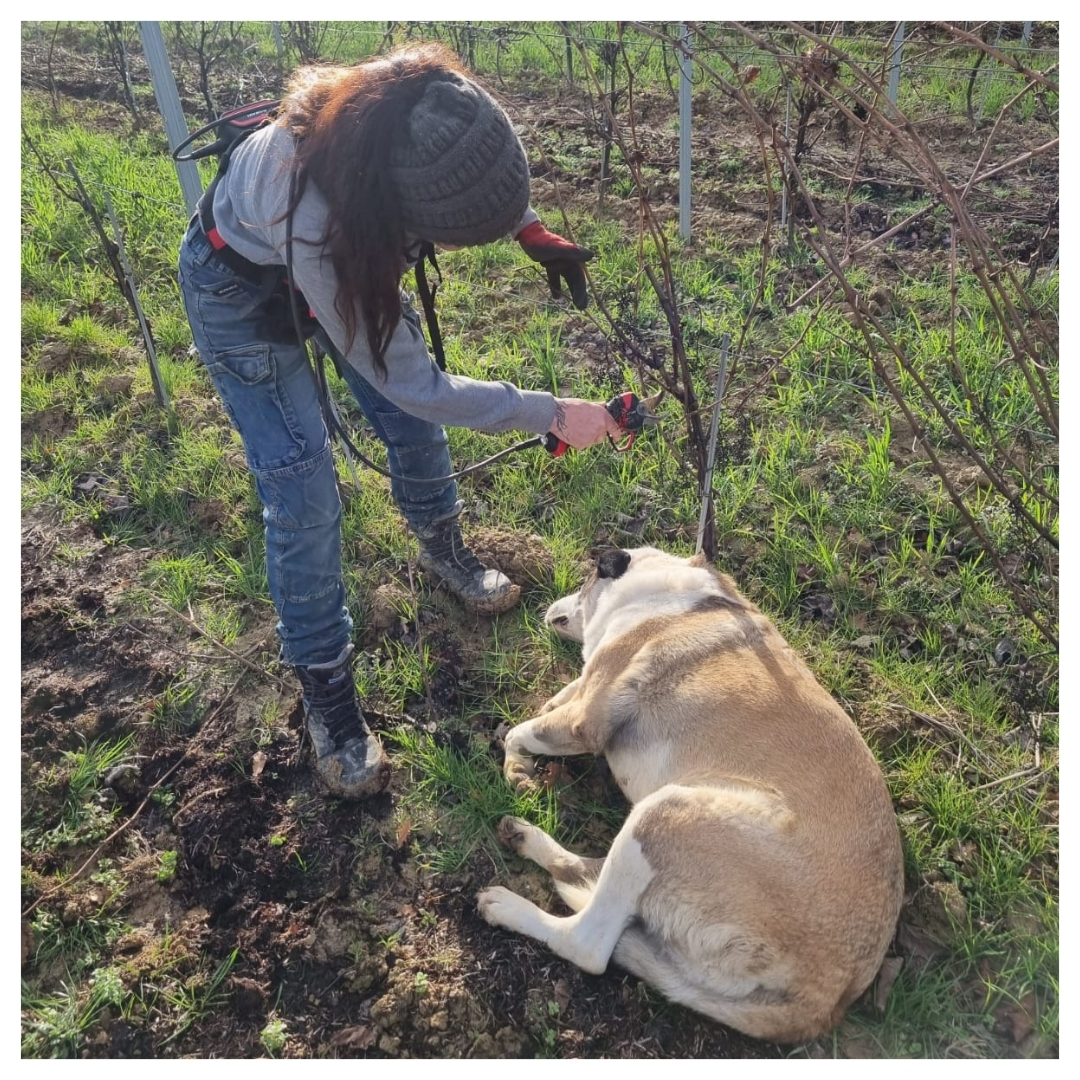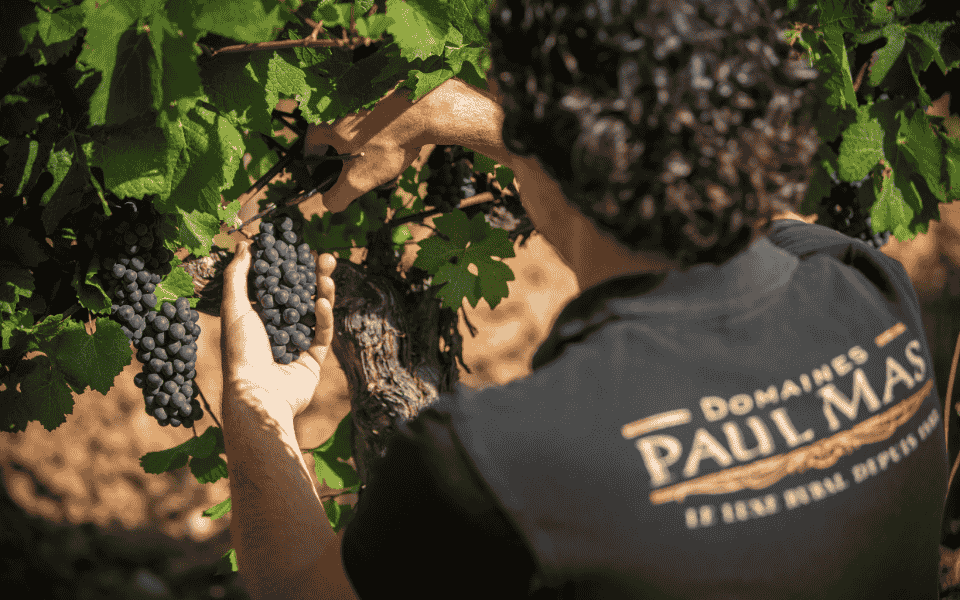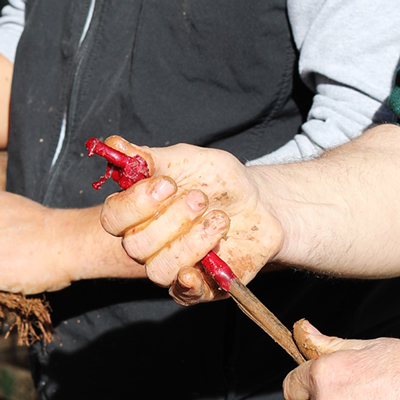

PRUNING:
A vital task at the heart of our commitment

Pruning: an art? A science?
Pruning is much more than a simple technical skill. It’s a veritable philosophy that translates into all our vine-growing practices. It’s a holistic approach that aims to preserve the vine’s natural balance and encourage its optimum expression.
At the heart of our vineyards, this ancestral gesture marks the start of a new cycle: pruning. It’s a well-oiled ballet, where the pruning shears shake in a concert of clickety-clack, punctuated by the singing accents of the winegrowers of the South of France.
In his vineyards, Jean-Claude Mas strives to perpetuate this unique know-how, handed down from generation to generation. It’s an art and a science that lie at the heart of our commitment to sustainable viticulture, respectful of the environment and a guarantee of exceptional wines.
More than a simple technique, pruning is a dialogue between the winegrower and the vine. It’s a precise, methodical gesture that aims to sculpt the vine stock, guide it and give it the strength it needs to produce quality grapes.
Thanks to their experience and in-depth knowledge of the terroir, Jean-Claude Mas and our vineyard managers choose the technique best suited to each plot and grape variety.
How to choose the right pruning option?
Each vine is unique, and it’s up to the winegrower’s expert eye to determine the best way to prune it. He must consider the age of the vine, the grape variety, the type of soil, the climate, and the objectives for the future harvest.
The different pruning techniques
There are various pruning techniques, each with its own pros and cons. The best known are:
Guyot Simple:
Concept: Two spurs and a cane are kept on each vine: a long cane with 6 to 10 eyes, the main area of grape production, and two shorter spurs which are used to provide the plant material for the following year.
Goal: To obtain a higher yield.
Benefits: Simple to implement, encourages grape production.
Cordon de Royat:
Concept: Several spurs are left on two “branches” or “arms” from previous years.
Goal: To obtain more aerated grapes and a better quality.
Benefits: Better circulation of air and sunlight, more concentrated grapes.
Goblet:
Concept: The vine is pruned in the shape of a goblet, with several branches starting from the bottom of the stock.
Goal: To encourage sunlight and air circulation.
Benefits: Simple to implement, allows good distribution of the grapes on the vine.
Better sap flow: a key element
Pruning the vine is an essential viticultural practice that has several benefits, improving the flow of sap through the plant. By cutting away dead, diseased, or unnecessary branches, pruning helps to aerate the plant, facilitating the circulation of sap, which is essential for transporting nutrients and water throughout the plant. Optimum sap flow contributes to vigorous growth, better ripening of the grapes and a more balanced distribution of resources in the vine. What’s more, by regulating growth and controlling yield, vine pruning enables winegrowers to produce better quality grapes, which is ultimately reflected in the quality of the wine produced. In short, vine pruning and the flow of sap it encourages are key elements in the management and optimisation of wine-growing crops.
A long and tedious job
Pruning vines is often considered to be the most time-consuming and tedious part of viticulture, for a few reasons.
Firstly, it is carried out manually, requiring a large amount of skilled labour. Also, each vine must be pruned individually, which takes time and patience. The complexity of pruning also lies in the fact that it requires in-depth knowledge of pruning techniques adapted to each grape variety and to the specific conditions of the vineyard. In addition, pruning must be carried out with precision to ensure balanced vine growth and quality production.
Finally, pruning must be carried out during the vine’s dormant season, in winter, when weather conditions can be difficult, making the work even more physically demanding. Pruning the vines is a long and tedious job, but crucial to the success and quality of the harvest.
Choosing the right pruning: a thoughtful decision
In the first year, pruning is generally done with two eyes. This means that only two buds are left on each vine. This pruning allows the vine to develop and become firmly established.
In the second year, pruning is “five-eyed”. This allows the vine to produce more wood and leaves, which are necessary for its growth. One eye is kept above the wire cable that supports the vine.
It is from the third year onwards that the winegrower can choose the definitive pruning he wishes to adopt.
The choice of pruning technique depends on several factors:
- Grape variety: Some grape varieties are better suited to certain pruning techniques than others (short pruning like Cordon de Royat & Gobelet or long pruning like Guyot).
- Terroir: The climate and soil of the vineyard can influence the choice of pruning.
- Goals: The winegrower must choose the pruning technique that will help him achieve its objectives.
Pruning is much more than just a technique. When the winegrower prunes the vine, he is giving it shape and guiding it towards its full potential. It’s an act of creation that produces unique, expressive wines. There is no single “best” pruning technique. The best technique is the one best suited to the grape variety, the terroir, and the winemaker’s goals.

A strong environmental commitment
At Domaines Paul Mas, we are firmly committed to sustainable viticulture. This approach aims to minimise the environmental impact of wine production while preserving the quality of the grapes and wines. Vine pruning plays a crucial role in this approach.
The benefits of careful, well considered pruning:
- A well-pruned vine is less susceptible to diseases and pests.
- Pruning helps to reduce water and energy consumption, as well as greenhouse gas emissions, because it can reduce the number of tractors passes.
- Promotes better sap flow in the plant.
Our strong commitment to the environment is reflected in the fact that we have been awarded two prestigious labels:
- HVE (High Environmental Value): this label certifies that Domaines Paul Mas is committed to implementing environmentally friendly practices.
- TERRA VITIS: this label stands for sustainable viticulture that respects the terroirs.
Summary
Vine pruning is an essential part of our commitment to sustainable viticulture and to producing exceptional wines. It’s an ancestral skill passed down from generation to generation, adapted to each vine, each terroir, and each vintage. An art and a science that translate into a holistic approach to viticulture, respectful of the environment and the natural balance of the vine. More than just a technique, pruning is an intimate dialogue between the winemaker and the vine, an act of creation that gives rise to unique, expressive wines.
Did you know?
Pruning competitions exist in certain wine-growing regions around the world. They generally involve participants competing to achieve the most precise and efficient pruning within a limited time. Judging criteria may include quality of pruning, speed of execution, precision in following pruning guidelines and other technical aspects of vine pruning. Becoming a good vine pruner can take several years and requires a commitment to continuous learning and the acquisition of significant practical experience.












